Pharmacodynamics
Action – anti-allergic, antihistamine, sedative, antiemetic, antipruritic, antipyretic, soporific, local anesthetic.
Competitively blocks H1-histamine receptors, has anti-exudative, anti-allergic, anti-inflammatory. Reduces capillary permeability, swelling of mucous membranes, itching. Blocks alpha-adrenoreceptors, M-cholinoreceptors. Inhibits histamine-N-methyltransferase, blocks central histamine H3-receptors. Depresses CNS, has sedative, anxiolytic, antipsychotic and hypnotic effects, lowers body temperature. It reduces excitability of vestibular receptors, inhibits labyrinth function, eliminates dizziness. The antiemetic effect is due to blockade of M-receptors in the chemoreceptor zone of the vomiting center of the medulla oblongata. It penetrates through the HEB. When administered 2 weeks before delivery, it may inhibit platelet aggregation in newborns. No mutagenic effects or adverse effects on fetal development have been found in experimental studies.

Pharmacokinetics
It is rapidly and completely absorbed from the gastrointestinal tract. When administered orally, effects appear after 15-60 min, when administered intramuscularly – after 20 min, when administered intravenously – after 3-5 min. Duration of action is 4-6 hours (after intravenous administration – up to 12 hours).
It is 65-90% bound to blood plasma proteins.
It is metabolized in the liver and partially in the kidneys to form promethazine sulfoxides, N-desmethylpromethazine and other derivatives. The elimination half-life is 7-14 hours. It is excreted mainly in the urine, including in the form of metabolites.
Indications
Allergodermatosis, prurigo, eczema, exudative diathesis, urticaria, rash and other skin allergic reactions to drugs and chemicals, itching, allergic conjunctivitis, allergic rhinitis, pollinosis, stings of wasps, bees, scorpions, bumblebees, serum sickness, angioneurotic edema, false croup, asthmatic bronchitis, atopic bronchial asthma, anaphylactic and anaphylactoid reactions (as part of complex therapy), rheumatism with a pronounced allergic component; Meniere’s syndrome, dizziness, nausea and vomiting, motion sickness; anxiety, neurosis and neurosis-like conditions, psychosis, insomnia, extrapyramidal disorders (against the background of taking neuroleptics), trigeminal neuralgia, migraine, chorea, hyperthermia; premedication and postoperative period (as a sedative, for artificial hibernation, potentiation of anesthesia and local anesthesia), study of gastric secretion (when used as a stimulant of histamine secretion).
Contraindications
Hypersensitivity (including to other phenothiazines), coma, concomitant use of MAO inhibitors and within 14 days after completion of their administration, alcohol intoxication, hepatic and/or renal failure, pregnancy, lactation, occasional vomiting in children of unspecified genesis, early childhood under 2 months (for parenteral administration), childhood under 6 years (for oral administration).
With caution: Jaundice, prostatic hypertrophy, predisposition to urinary retention, bladder neck stenosis, open or closed angle glaucoma, peptic ulcer with pyloroduodenal obstruction, lower respiratory tract diseases, bone marrow dysfunction, cardiovascular diseases (severe angina, arterial hypertension, decompensated chronic heart failure, atrial fibrillation), epilepsy, sleep apnea, Reye syndrome, advanced age.
Pregnancy and lactation
Contraindicated in pregnancy. The FDA fetal category is C.
Breastfeeding should be stopped during treatment.
Dosage and administration
Orally (after meals), intramuscularly, intravenously. Adults: 12.5-25 mg 3-4 times daily and 25-50 mg at night (maximum dose: single dose – 75 mg, daily – 500 mg). In kinetosis, 12.5-25 mg 3-4 times daily orally. In case of nausea and vomiting, at first 25 mg, then 12.5-25 mg every 4-6 hours. For children: 2-6 years of age – 12.5 mg, 6-14 years – 25 mg 3-4 times a day. Parenterally (emergency cases, anesthesia): intravenously (deep into the muscle) in a dose of 0.5-1 mg/kg 3-5 times a day (in severe cases, the initial dose is 1-2 mg/kg), the maximum daily dose is 250 mg; intravenously (for hibernation) 0.15-0.3 mg/kg (maximum concentration) – 25 mg/ml, the rate of administration is 25 mg/min). In preparation for surgery, the evening before, 25-50 mg orally along with other drugs; on the day of surgery 2.5 hours before surgery, 50 mg/m (in combination with an analgesic and a cholinolytic); a second injection after 1 hour is possible; in children, the dose is 1.1 mg/kg. For seasickness syndrome prophylaxis, once 1 hour before travel, adults 25-50 mg, children 10-20 mg. For adjuvant therapy of anaphylactic shock – 10-20 mg v/v slowly (after epinephrine injection) and further during the next 24-48 hours to prevent recurrence.
Side effects
Nervous system and sensory organs
Sedation, dizziness, drowsiness, restlessness, agitation, nightmares, increased nighttime apnea; rarely – disorientation, confusion, extrapyramidal disorders, increased seizure activity (in children); accommodation and vision disorders, tinnitus or ringing in the ears.
Cardiovascular system and blood (hematopoiesis, hemostasis)
Orthostatic hypotension (when administered intravenously), hypertension, tachycardia or bradycardia; rarely – leukopenia, thrombocytopenia, agranulocytosis.
Respiratory system: dryness in the nose, pharynx.
Respiratory system disorders
Dryness in the nose, pharynx.
Urinary system disorders
Rare – difficult or painful urination
Allergic reactions
Urticaria, dermatitis, asthma.
Other
Increased sweating, photosensitization, pain (when administered intravenously).
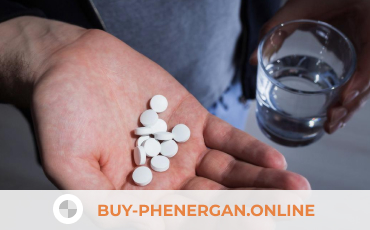
Overdose
- Symptoms: facial hyperemia, dyspnea, dry mucous membranes, mydriasis, restlessness, motor hyperactivity, agitation, delirium (in children), extrapyramidal disorders, tremor, epileptiform seizures (rare), hypotension, respiratory depression, loss of consciousness.
- Treatment: induction of vomiting, gastric lavage, prescription of activated charcoal, saline laxatives (if oral), intravenous fluid administration; monitoring and maintenance of vital functions; symptomatic therapy: vasoconstrictors (for hypotension), oxygen (to maintain adequate oxygenation).
It is not recommended to use analeptics (may cause seizures) and epinephrine (may increase hypotension). If extrapyramidal reactions develop, anticholinergic agents used to treat parkinsonism, diphenhydramine or barbiturates are used. Dialysis is ineffective.
Interaction
β-Adrenoblockers – increased (reciprocal) plasma concentrations, severe arterial hypotension, arrhythmias, irreversible retinopathy, tardive dyskinesia.
Analgesics, sleeping pills, tranquilizers, neuroleptics, anesthetics, local anesthetics, m-cholinoblockers, hypotensive agents, other respiratory depressants – increased effects, requires dose adjustment.
Barbiturates – acceleration of elimination and reduction of promethazine activity.
Bromocriptine – weakening of its effects, increased serum prolactin concentration.
Hepatotoxic agents – increase in hepatotoxicity.
MAO inhibitors (simultaneous use is not recommended), phenothiazine derivatives – increased risk of arterial hypotension and extrapyramidal disorders.
Ototoxic agents – increasing ototoxicity.
Amphetamine derivatives, m-cholinomimetics, anticholinesterase drugs, ephedrine, guanethidine, levodopa, dopamine – weakening of their action.
Riboflavin – it is necessary to increase its dose.
Appetite suppressants – reduction of anorexigenic effect.
Tricyclic antidepressants, anticholinergic agents – increase m-cholinoblocking activity.
Quinidine – increased likelihood of cardiodepressant action.
Epinephrine – blockade of α-adrenergic effect, risk of serious hypotension.
Ethanol, clonidine, anticonvulsants – increase in CNS depression.
Special Directions
Impaired platelet aggregation has occurred in neonates whose mothers have received promethazine.
During long-term treatment it is recommended to perform systematic general blood tests and control liver function parameters.
Alcohol should be avoided during treatment.
Use with caution in children with acute or chronic respiratory diseases as promethazine suppresses the cough reflex.
It is not recommended for use in children to stop episodic vomiting of unspecified genesis.
The use of promethazine in combination with opioid analgesics and tranquilizers for complex preoperative preparation of patients is possible only under strict medical supervision.
During long-term treatment it is recommended to perform systematic general blood analysis and control of liver function parameters.
Alcohol must be avoided during treatment.
The solution is not intended for intravenous and percutaneous administration. Some dosage forms of promethazine contain sodium metabisulfite, which may cause allergic reactions including anaphylactoid and asthmatic reactions. To prevent distorted results of skin scarification tests for allergens, it is necessary to cancel 72 h before allergy testing.
False-positive pregnancy test results may occur during treatment.
May suppress cough reflex, so caution is necessary in patients (especially children) with exacerbation of chronic respiratory diseases.
Caution is necessary when using in patients with liver dysfunction, cardiovascular system diseases and suppression of medullary hematopoiesis.
In the elderly, caution is required when parenteral administration of high doses because extrapyramidal disorders and acute urinary retention are possible.
As an antiemetic it should be used only in case of prolonged vomiting of known etiology.
Caffeine administration is recommended to prevent CNS depression. Long-term use increases the risk of dental disease (caries, periodontitis, candidiasis) due to reduced salivation.
May mask the ototoxic effect (tinnitus and dizziness) of co-administered drugs. Increases the need for riboflavin.
Effect on the ability to drive vehicles and operate machinery.
Do not use during work for drivers of vehicles and people whose profession is connected with high concentration (especially at the beginning of the course).
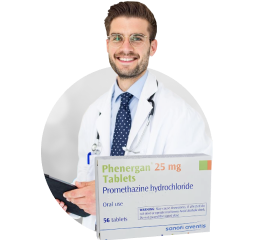

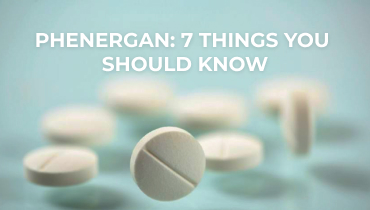
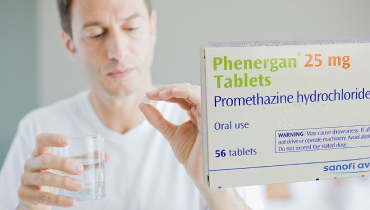
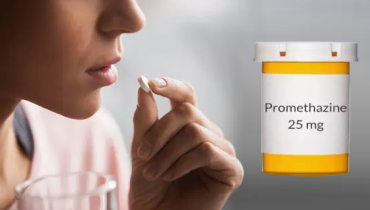







I received the package a few days ago. Thank you so very much! Everything was perfect. I do appreciate your great service and will most definitely order again from you. I'm glad to say that I can recommend you with total confidence. Thanks
Yeah! The package arrived very quickly. Thanks!
Everything is fine! Thanks!